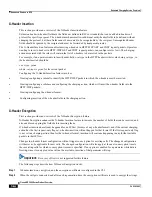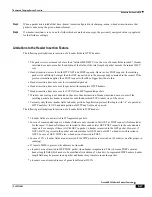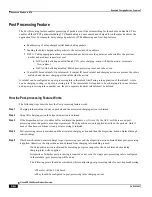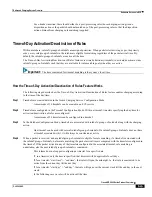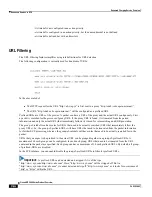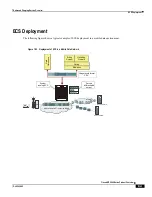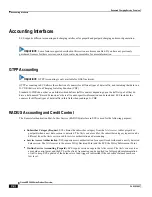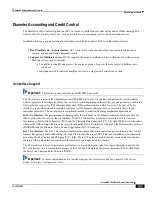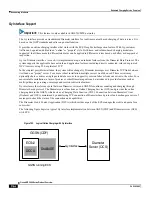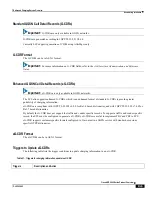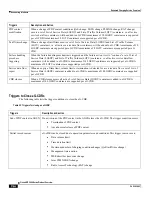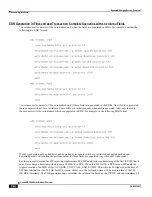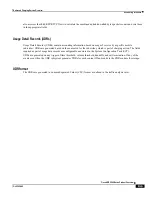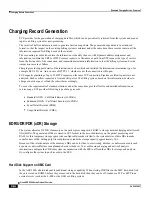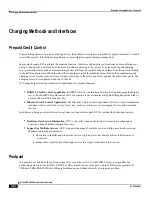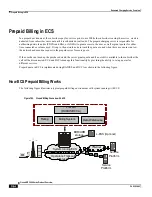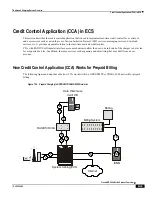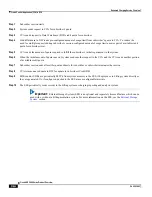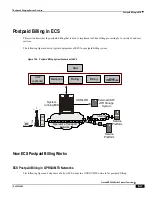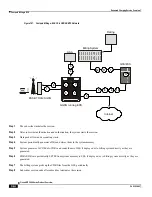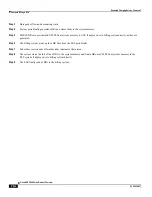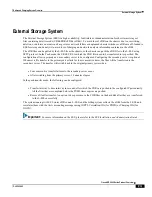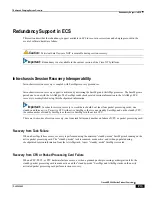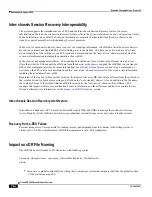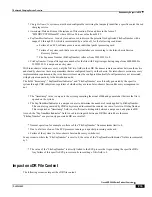
Enhanced Charging Service Overview
▀ Charging Record Generation
▄ Cisco ASR 5000 Series Product Overview
OL-22938-02
Charging Record Generation
ECS provides for the generation of charging data files, which can be periodically retrieved from the system and used as
input to a billing system for post-processing.
The results of traffic analyzer are used to generate Session usage data. The generated usage data are in a standard
format, so that the impact on the existing billing system is minimal and at the same time, these records contain all the
information required for billing based on the content.
The accounting records also contain the information to identify the user, with Dynamic address assignment and
information to obtain the URL for HTTP content request or a file-name or path from FTP request, the type of service
from the first packet of the connection, and transaction termination information so that the billing system can decide
transaction success or failure.
Charging records support details of the termination, such as which end initiated the termination, termination type, for
example RST, FIN, etc. And, in case of HTTP 1.1, whether or not the connection is still open.
ECS supports pipelining of up to 32 HTTP requests on the same TCP connection. Pipeline overflow requests are not
analyzed. Such overflow requests are treated as http-error. The billing system, based on this information, decides to
charge or not charge, or refund the subscriber accordingly.
To cover the requirements of standard solutions and at the same time, provide flexible and detailed information on
service usage, ECS provides following type of usage records:
Standard GGSN - Call Detail Records (G-CDRs)
Enhanced GGSN - Call Detail Records (eG-CDRs)
Event Detail Records (EDRs)
Usage Detail Records (UDRs)
EDR/UDR/FDR (xDR) Storage
The system allocates 512 MB of memory on the packet processing card‘s RAM to store generated charging detail record
files (xDRs). The generated xDRs are stored in CSV format in the /records directory on the packet processing card
RAM. As this temporary storage space (size configurable) reaches its limits, the system deletes older xDRs to make
room for new xDRs. Setting gzip file compression extends the storage capacity approximately 10:1.
Because of the volatile nature of the memory, xDRs can be lost due to overwriting, deletion, or unforeseen events such
as power or network failure or unplanned chassis switchover. To avoid loosing charging and network analysis
information, configure the CDR subsystem in conjunction with the ESS to offload the xDRs for storage and analysis.
Or, configure the system to push records to the ESS.
Hard Disk Support on SMC Card
In the ASR 5000, a hard disk enables additional storage capability. When storing CDR files on the SMC hard disk, first
they are stored on RAMFS before they are moved to the hard disk, then they can be off-loaded via FTP or SFTP to an
external server (such as the L-ESS or the GSS) or billing system.
Summary of Contents for ASR 5000 Series
Page 1: ......
Page 26: ......
Page 48: ...New In Release 10 0 SCM Features Cisco ASR 5000 Series Product Overview OL 22938 02 ...
Page 50: ......
Page 58: ......
Page 68: ......
Page 126: ......
Page 138: ......
Page 146: ......
Page 218: ......
Page 236: ......
Page 356: ......
Page 374: ......
Page 422: ......
Page 496: ......
Page 572: ......
Page 654: ......
Page 700: ......
Page 726: ......
Page 784: ......
Page 816: ......
Page 844: ......
Page 906: ......
Page 926: ......
Page 942: ......
Page 943: ...Cisco ASR 5000 Series Product Overview OL 22938 02 Chapter 30 Technical Specifications ...
Page 966: ......
Page 972: ......

